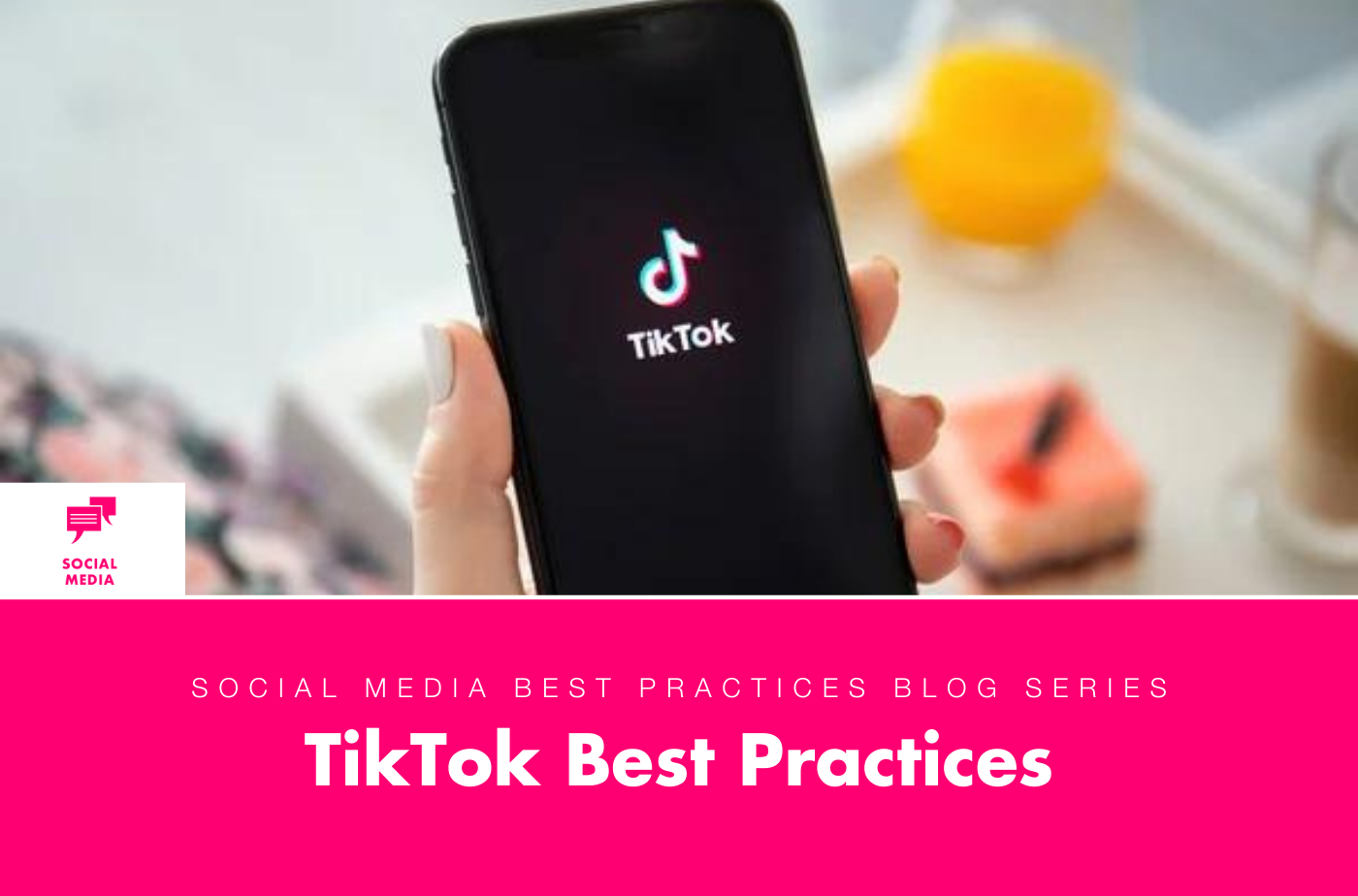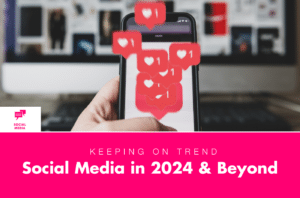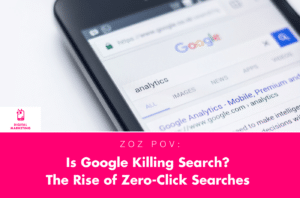These TikTok best practices are part of an ongoing series we have called Social Media best practices. Included in this series: Facebook best practices, Instagram best practices, Snapchat best practices and LinkedIn best practices.
Platform Information
As one of the fastest-growing social media platforms, TikTok has over one billion monthly active users with nearly one-third of those monthly users accessing the app daily. It’s also the most engaging social media app, with an average session length of 10.85 minutes, compared to Facebook at 4.82 and Instagram at 2.95 minutes.
TikTok is a great channel for targeting younger demographics and offers a unique opportunity for brands in regard to its broad organic and paid reach. For small and medium-sized businesses already active on TikTok, 78% said they plan to increase their investment in the platform and 59% said the platform helped them increase revenue.
Platform Audience
Current audience demographics as of January 2023.
- 32.5% are 10-19
- 29.5% are 20-29
- 16.4% 30-39
- 13.9% 40-49
- 60% female
- 40% male
Posting and Cadence Times
TikTok’s algorithm awards frequent posting, so it is important to post more frequently and more consistently than your competitors. We find that this is currently the optimal cadence and posting schedule for TikTok, every account is different.
- 1-3 times a day is ideal for growth, but brands should focus on high-quality and engaging content over quantity
- 3x/week minimum
Best Times to Post (in your own timezone)
- Tuesday: 2-6pm
- Wednesday: 2-5pm
- Thursday: 3-5pm
Best Days to Post
- Tuesday and Wednesdays
Worst Days to Post
- Sundays
(Post cadence may change depending on industry and unique audiences)
TikTok Content Features
TikTok is a video-only platform, where users can choose to share pre-recorded videos or live videos. Recorded videos can be up to 3 minutes long, but the best practice is still videos of 15 sec. max length.
TikTok possesses an array of features that appeal to brand users:
- Video Recording and Uploading – Brands can record videos directly on the app or upload their own existing footage.
- Video Editing – TikTok comes with an array of robust editing tools including cropping and flipping videos and changing playback speed.
- Filters and Effects – There are an abundance of filters and effects that brands can put on their videos including beauty filters, AR filters, and green screen effects.
- Sounds – TikTok offers a wide range of music and sound effects that can be added to videos.
- Voiceover – Brands can record voiceovers, adding narration to pre-recorded videos.
- Live Video Streaming – Live videos allow brands and their followers to interact in real-time. Users can even send Gifts to creators while they are live streaming.
- Duet – Brands can Duet a customer’s video, allowing them to interact with their customers’ content
- Stitch – Brands can Stitch their video with a customer’s video (and vice versa). This allows brands to react to customer’s content and add commentary and it allows customers to follow instructions or ask questions.
- Video Reply – This feature allows brands to answer questions, clear up doubts, follow requests, or share opinions by responding to specific comments from a previous video in a new video. When Video Replying, the comment will be highlighted as an overlay in the video.
Music
Not only is music integral to the entire TikTok experience (originating from the app’s evolution from “Musical.ly”), but audio tracks are one of the best ways to achieve growth on TikTok. Users can choose from the large TikTok music library and add trending music tracks to videos. Original audio tracks can also be uploaded to your videos.
When brands use popular songs in their videos, 68% of TikTokers say it improved brands recall and 58% of users report that they’re more likely to share the ad and brand with their network.
Similar to hashtags on other platforms, using trending sounds on TikTok will help to boost your post and bring more engagement. However, if using a Business account on TikTok, which many brands and businesses do, music selection is limited to commercial music.
Image/Video Specs
- Videos: 9:16 aspect ratio
TikTok Hashtag Usage
Using 3-5 hashtags can improve your video’s ranking in the TikTok algorithm and increase your reach. There is no limit to the number of hashtags you can include as TikTok recently changed the character limit from 300 to 2,200 (the same as Instagram). However, the best practice for a video description on TikTok is still between 50-100 characters.
TikTok Growth Opportunities
Authentic Connection
TikTok users value authenticity. Brands that show a more human side can connect with users on a deeper level. This might mean showing behind-the-scenes content, highlighting employees, or sharing candid moments.
Creating Entertaining and Informative Content
Nearly 80% of TikTok users use the platform for entertainment and fun content. As a result, it is important that brands push out highly entertaining content that resonates with target audiences in order to stand out. Brands should do market research—watching top videos and competitor content—to discover what their audience finds entertaining.
Additionally, informative content also performs well on the platform. In fact, younger audiences are beginning to use TikTok as a search engine to research businesses and stay up-to-date on world news. Sharing informative content can help educate your audience in a way that aligns with your platform’s content format.
- 40% of Generation Z prefers to turn to TikTok or Instagram rather than Google for location recommendations.
- 39% of Generation Z consumers say TikTok directly influences their purchasing decisions
Launching Challenges
Challenges on TikTok are campaigns (or trends) that invite people to create their own videos based on performing a specific task. Such tasks may include displaying talent, showing off how you use a product, performing a dance, or lip-syncing to a specific TikTok sound. Hashtags generally make these trends and the content created for them more visible and easier to find. The main types of TikTok Challenges are Branded Challenges, Community Challenges, Hashtag Challenge ads, and Creative Challenges.
- Branded Challenges are challenge-based campaigns created by a brand. Typically, brands will partner with creators on the platform to promote the challenge and drive awareness to the promotion’s hashtag. Since these challenges are organic, typically they have a lower reach than other paid campaigns.
- Community Challenges are created organically and tend to be more niche and speak to a smaller set of creators. For example, beauty, fashion, fitness, and gaming TikTok communities all have their own set of Community Challenges. Due to the TikTok algorithm, brands searching for specific community challenges must spend time engaging with their target audience and customers. However, because community challenges often involve the usage of products or shout-outs to brands, it is still advantageous for brands to find and take part in these challenges.
- Branded Hashtag Challenge Ads are hashtag challenges sponsored by brands. Usually reserved for larger brands, these ads appear on TikTok’s discovery page and are denoted by the “sponsored” label. Branded Hashtag Challenge Ads are paid advertisements meant to encourage other Tiktokers to take part in the challenge using the sponsored hashtag. While these types of challenges often create engagement and build brand awareness, they can also be quite expensive.
- Creative Challenges launched in 2023 as a feature that pairs creators with brands by allowing creators to submit video ads and receive rewards based on the ads’ performance. Brands can assign a challenge brief with the reward, rules, and requirements, and creators can browse the list to identify which challenges they’re most aligned with. This gives creators full creative freedom over their ads and makes paid TikTok advertising more accessible to smaller brands.
TikTok Ads
The TikTok platform provides an entertaining and engaging way to promote your brand. In fact, 55% of TikTok users have completed a purchase after seeing a brand on the platform. Similar to Facebook’s advertising system, TikTok Ad Manager offers brands a great opportunity to reach new audiences. There are a range of TikTok ad options that brands can choose from:
- In-feed video ads are the most popular (and organic) on TikTok, appearing as just another video on viewers’ “For You Pages.” This type of ad generally receives the most in-app engagement since users can like and comment on it. In-feed video ads can be up to 60s, but TikTok recommends they still be short and snappy. Additionally, these ads feature a clickable CTA button which can be used to drive traffic to an external landing page or to your brand’s TikTok account. These ads are ideal for brands just wanting to get more recognition.
- Top View Ads occupy the first In-feed post after first opening the app. These ads can show up to 60 secs of full-screen video without any distractions from other videos. However, users can still scroll through the ad, so it is important that brands be creative with their ad content. Top View Ads are the second most common ad behind In-feed and are more expensive because brands do not have to capture initial interest from viewers.
- Brand Takeover Ads pop up as soon as users open the TikTok app, taking over the full screen before changing into an in-feed video ad. These ads are short—either a 3-second image or a 3-5 second video—but highly impactful. Created for mass awareness, this ad format will guarantee high reach and great performance. Brand Takeover ads have a 100% Share of Voice for the day that they are featured, meaning users will not see any other Brand Takeover on that particular day. As a result, it is advantageous for brands to have more than one different yet cohesive video or image to display for their ads. This will allow brands to avoid repetitiveness and keep users engaged while still maintaining brand recognition. Brand Takeover ads are pricey and are often used by large brands seeking maximum exposure.
- There are Other options when it comes to advertising on TikTok, including branded hashtags, branded effects/filters, and spark ads
Influencer-Generated Content and User-Generated Content
TikTok influencer marketing is the process of partnering with content creators to make short-form TikTok videos that promote your brand. While brands post other branded content or paid ads, influencer-generated content (IGC) often generates more engagement and is far more effective. Advertising through influencers allows brands to leverage the deep marketing power of social proof and brand trust while avoiding coming off as “salesy.” IGC also alleviates a brand’s need to constantly produce new content themselves.
Similarly, brands can reshare user-generated content (UGC) to capture attention on TikTok. UGC features products from a specific brand but is created by users instead of brands. Brands can then use this content in their social ad campaigns or add it to their organic social media pages. UGC methods on TikTok may include branded hashtags, giveaways, challenges, duets, and tutorials.
While these two marketing strategies are similar, the main difference is that influencer-generated content is paid for by the brand in some form of agreement or collaboration with the creator. On the other hand, user-generated content has no formal affiliation with the brand, often coming off as more authentic. In fact, compared to content created and published by brands, UGC videos on TikTok can help brands better emotionally engage with their audiences.
The main benefits of using IGC and UCG marketing are:
- Increases brand awareness in an authentic way – Because the content on Tiktok is hyper-personalized and very specific to users’ personal and professional interests, UGC and IGC allow brands to reach people who are not interested in traditional ads and promotions.
- Can influence purchasing decisions – Compared to social media ads, IGC and UGC are more subtle approaches to promoting your brand. In turn, this content can entice users to check out your product. Since brand promotion comes from real users instead of brands, users are more likely to purchase.
- Around 34% of TikTok users have purchased products because of influencers
- Around 70% of consumers consider UGC reviews before they buy some product for the first time
E-Commerce Integration (TikTok Shop)
The Tiktok Shop is a new shopping feature that enables merchants, brands, and creators to showcase and sell products directly on Tiktok through in-feed videos, Live Videos, and the product showcase tab.
- In-Feed Videos – Users can shop directly from a shoppable in-feed video posted by a brand by tapping the featured product link and basket icon on the screen.
- Live Videos – Brands can pin products or add products to their shopping basket for customers while LIVE. As a result, customers can shop directly from a LIVE by tapping the pinned products or browsing the shopping basket icon.
- Product Showcase – Brands can add a Product Showcase to their page, allowing customers to shop directly from a brand’s account and get access to the products within the app.
The TikTok Shop is an all-in-app experience, meaning there is no redirection to partnered shopping apps or websites, often leading to higher conversion and sales.
Click here to download a PDF version of our TikTok Best Practices.
BOSTON, MARS




